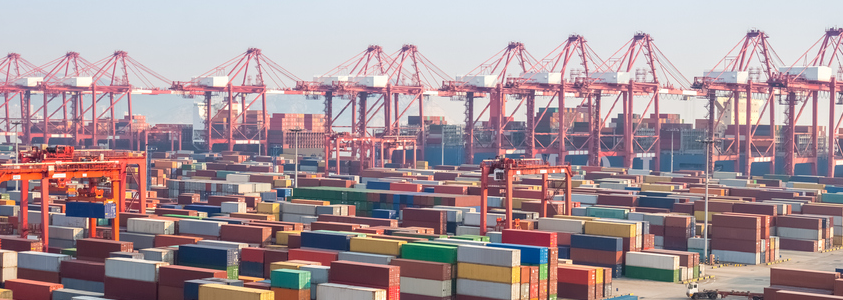
Peak shipping season is extended this year, as many shippers are eagerly importing goods into the US prior to the next round of tariffs on Chinese merchandise. Effective January 1, 2019, Section 301 duties will increase from 10% to 25% for over 5,000 tariff lines of Chinese-origin goods
The prolonged season continues as importers seek to stock up before duty rates increase. This year,
Avoiding the Cargo Traffic Jam
Cargo bottlenecks have already found their way into US West Coast and East Coast ports. Canadian ports are also experiencing capacity constraints. To get Chinese-origin goods to the US prior to the January 1st deadline, shippers will need to have cargo on the water by December 10th for West Coast-bound ports and November 26th for East Coast ports of
Book Far in Advance
Space is expected to become a premium—and quickly. The rush of cargo is anticipated to continue through the end of November, and cargo subject to tariffs may hold steady with arrivals through mid-December or later. Importers should consider booking as far as possible in advance.
What happens if you wait until the last minute?
- When carriers reach their volume threshold, they will stop taking bookings.
- Bookings will be rolled to a later departure.
- Carriers may prioritize shippers that have paid the most for their cargo, resulting in missed bookings or untimely departures.
Shippers are advised that booking a week before cargo is ready for air shipments and four weeks prior for FCL ocean shipments may not be enough time. Additionally, for LCL ocean shipments, shippers should plan to add an additional week or two to the booking time.

Stock the Shelves
For many, just-in-time shipments and low inventory levels are a thing of the past. Warehouses across the country are teeming with goods, as many companies have stocked up—not just for peak season, but also in advance of tariffs on Chinese products.
The inevitable backlog created by peak season can be averted by stocking the shelves even more. Chinese New Year follows on the heels of US holidays, and this time frame also presents excess bookings. It’s not too late to stock up in anticipation of next year’s high volume periods. Stock on hand ensures production lines keep running and store shelves remain full.
Down to the Wire
For importers who don’t have excess inventory on hand and haven’t booked yet, alternate routings may be another option.
For example, if your Chinese-origin goods usually take an all-water route to the East Coast, it’ll make sense to instead choose a more direct route to the West Coast. Avoiding the Panama Canal will save two weeks of time, allowing the goods to get to the US quickly and, hopefully, before the January 1st tariff deadline. Even with the congestion of the West Coast, the goods would be cleared by US Customs much sooner than the two weeks excess transit time if the cargo took the all-water route to the eastern shores of the US.
A quick cost-benefit analysis can help with routing decisions. If alternative routings mean higher costs, will the increased transit cost be less than the extra duty if the Chinese goods were to arrive on or after January 1st?
There are additional scenarios to tighten down the transit times if it's getting down to the wire:
- For all-water routings to the US East Coast,
mini-land bridge (MLB), and reverse inland point intermodal (RIPI) shipments, clearing goods on the West Coast may be a solution. - If LA/Long Beach is backlogged, book cargo through other US West Coast ports. Excess inland transit costs may still be less expensive than the increased tariffs.
- Goods bound for the US via Canadian ports (e.g., Montreal, Vancouver) may need to ship directly to the US.
Get the Goods Here
Whether shipping during traditional peak season or in advance of tariffs, knowing and implementing these strategies may help mitigate the added cost. Scheduling bookings in advance, stocking up, and changing up




